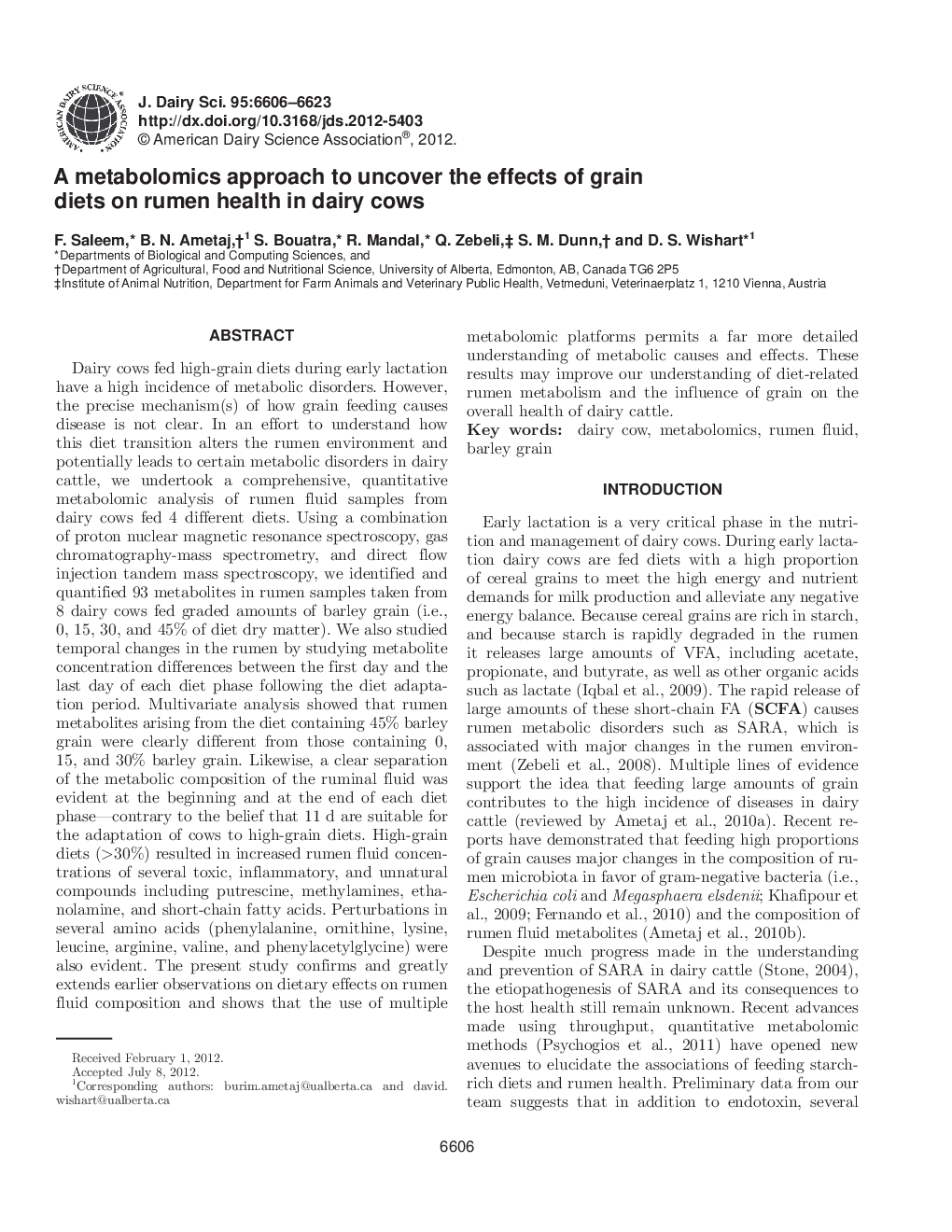| Article ID | Journal | Published Year | Pages | File Type |
|---|---|---|---|---|
| 10979571 | Journal of Dairy Science | 2012 | 18 Pages |
Abstract
Dairy cows fed high-grain diets during early lactation have a high incidence of metabolic disorders. However, the precise mechanism(s) of how grain feeding causes disease is not clear. In an effort to understand how this diet transition alters the rumen environment and potentially leads to certain metabolic disorders in dairy cattle, we undertook a comprehensive, quantitative metabolomic analysis of rumen fluid samples from dairy cows fed 4 different diets. Using a combination of proton nuclear magnetic resonance spectroscopy, gas chromatography-mass spectrometry, and direct flow injection tandem mass spectroscopy, we identified and quantified 93 metabolites in rumen samples taken from 8 dairy cows fed graded amounts of barley grain (i.e., 0, 15, 30, and 45% of diet dry matter). We also studied temporal changes in the rumen by studying metabolite concentration differences between the first day and the last day of each diet phase following the diet adaptation period. Multivariate analysis showed that rumen metabolites arising from the diet containing 45% barley grain were clearly different from those containing 0, 15, and 30% barley grain. Likewise, a clear separation of the metabolic composition of the ruminal fluid was evident at the beginning and at the end of each diet phase-contrary to the belief that 11Â d are suitable for the adaptation of cows to high-grain diets. High-grain diets (>30%) resulted in increased rumen fluid concentrations of several toxic, inflammatory, and unnatural compounds including putrescine, methylamines, ethanolamine, and short-chain fatty acids. Perturbations in several amino acids (phenylalanine, ornithine, lysine, leucine, arginine, valine, and phenylacetylglycine) were also evident. The present study confirms and greatly extends earlier observations on dietary effects on rumen fluid composition and shows that the use of multiple metabolomic platforms permits a far more detailed understanding of metabolic causes and effects. These results may improve our understanding of diet-related rumen metabolism and the influence of grain on the overall health of dairy cattle.
Related Topics
Life Sciences
Agricultural and Biological Sciences
Animal Science and Zoology
Authors
F. Saleem, B.N. Ametaj, S. Bouatra, R. Mandal, Q. Zebeli, S.M. Dunn, D.S. Wishart,
